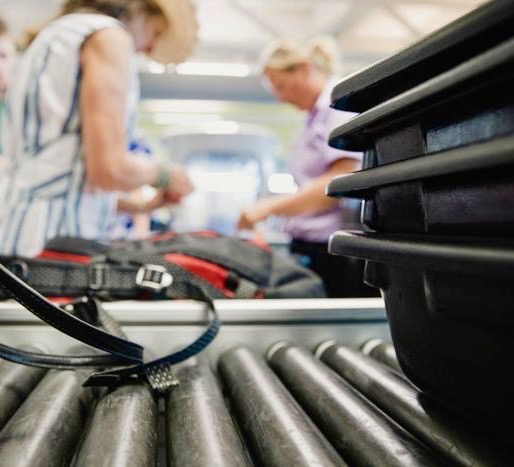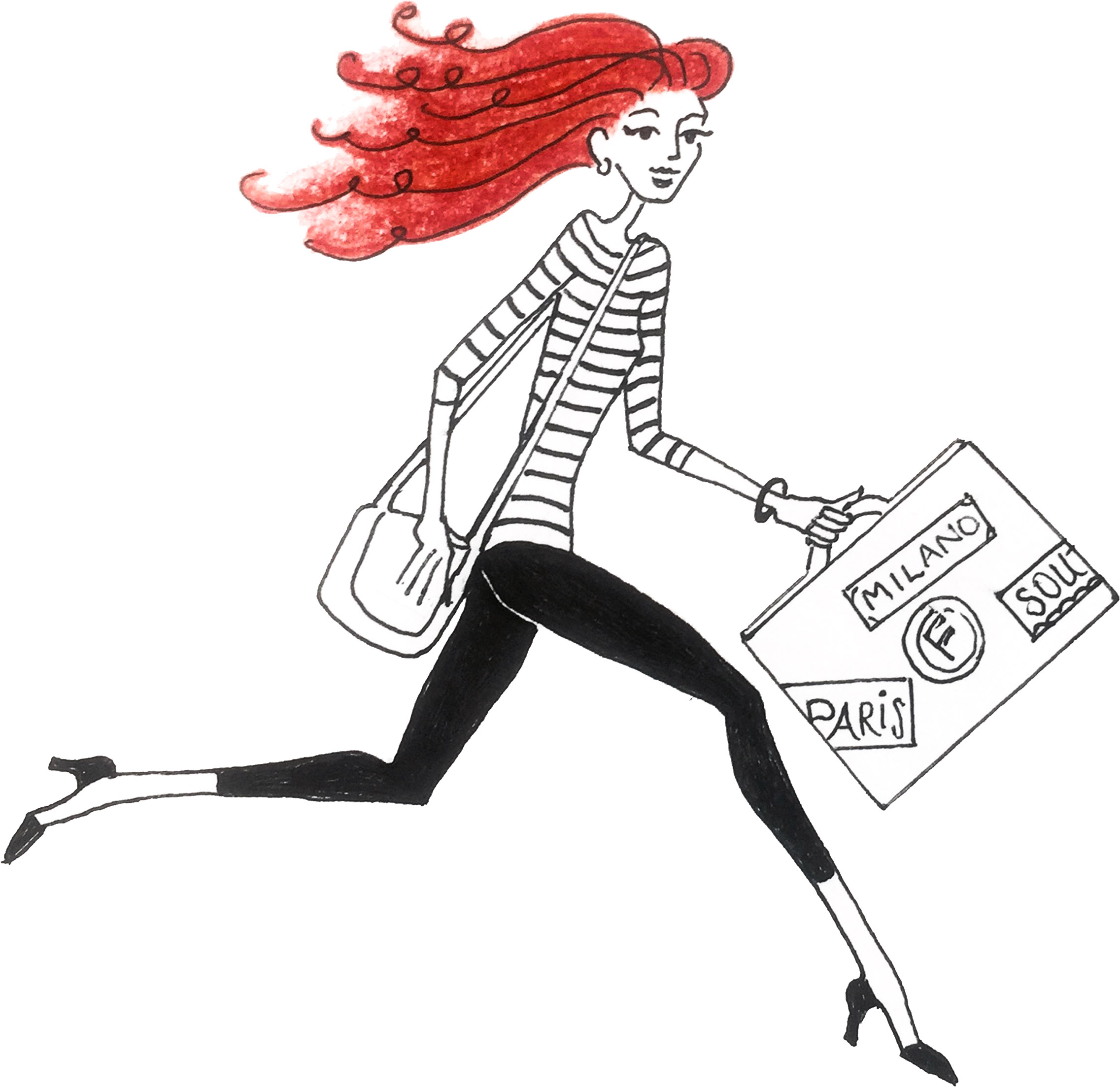The TSA has upgraded their screening procedures—find out what they (literally) won’t touch and the 12 ounces of liquid you can now carry on.

Air travel is picking up, and the Transportation Security Administration (TSA) is making changes to its security screening procedures in response to new recommendations for hygiene and health in airports. Implementation should be complete nationwide by mid-June. Here’s what you need to know so you’re ready to breeze through security without someone unnecessarily touching you or your stuff.
New rules:
Don’t touch this!
Instead of handing your boarding pass to a TSA officer at the travel document podium, you should now place your boarding pass (paper or electronic) on the boarding pass reader yourself. After it’s scanned, you should hold up your boarding pass so the TSA officer can visually inspect it. No more scribbling on paper or handling of your phone.
(I never did understand the point of the scribbling; I mean, they couldn’t do it on electronic boarding passes and I never had anyone check what was jotted down.) Unfortunately, the TSA officer may still have to handle your ID if a UV light or other device isn’t used to verify its authenticity.
Bag it.
It’s estimated more people will self-cater to avoid contact with crew or items that haven’t been under their control. As always, you can bring wraps, sandwiches, sushi, or other favorite nibbles from home or a takeaway place through airport security. (If you intend to eat on the plane, it’s nice to be considerate of your seatmates and not bring something messy or pungent, like barbeque ribs or your aunt’s fried chicken.)
Now you have to put all food through the scanner separately, in a clear plastic bag. Food items often trigger an alarm during the screening process; separating food from your carry-on bag lessens the likelihood that a TSA officer will need to open the bag and remove the food items for a closer inspection.
Even though PreCheck members don’t need to remove food items from their bags, I always take out my energy bars. I’ve been told more than once by screeners their mylar wrapping, especially when grouped together, makes them look like blocks of C-4 explosive.

I like to use these silicone bags for my plane snacks. Not only are they reusable, but they come in a bunch of sizes and are dishwasher/oven/boiling water/microwave/freezer-safe. Some even stand up on their own, making it easy to fill them up.
I’ve used these baggies to not only carry food for the plane but also to store or reheat stuff once I get to my destination, like treats from a market or restaurant leftovers. They are BPA, PVC, and latex-free, and are easy to wipe down after you’ve retrieved them from the gross non-sanitized TSA bin.
Twelve is good to go.
Previously, liquids were limited to 3.4 ounces (100 ml) each with the exception of things like medicine and breast milk. Now you’re allowed to carry on one container of up to twelve ounces of hand sanitizer; it has to be taken out of your carry-on bag and put in a bin for X-ray screening.
Leave your gun, knife, and bottle of water at home.
If a prohibited item is spotted during screening, you may be asked to leave the line to get rid of it yourself and then start the screening process all over again.
Encouraged but not required:
You’re encouraged (some airports and airlines require it) to wear facial protection through checkpoints. (It may need to be adjusted or removed to confirm your identity.)
You’re also urged to put personal items like belts, wallets, and phones in your bag rather than the bins, which have always been one of the germiest spots in the airport.
Other changes you may encounter:
TSA officers at checkpoints using facial protection (masks or shields and possibly eye protection, too) in addition to gloves. Gloves are still changed between pat-downs.
Fewer officers on duty (and those who are may be practicing social distancing). This may mean longer lines, with signs or ground markings to encourage passenger social distancing. (As a practical matter, unless they want security lines out the door and down the street, I can’t see there being enough room to do this once travel numbers increase.)
Plastic shielding installed at the travel document checking podiums and bag drop off and search locations.

Routine cleaning and disinfecting of frequently-touched surfaces in the checkpoint and screening areas. (Allergy alert to those of you who are sensitive.)
Some last advice:
After going through security, take a moment to wash your hands and wipe down the stuff that you put in the bins. (You may want to change out rather than wipe down the plastic bag your food is in.)
And please wear a mask. It can only help defeat the virus, which means we can travel more, not less.
Twist’s Take: Changes are coming to TSA screening procedures and perhaps your local airport’s rules. Keeping up with them helps you breeze through security without someone unnecessarily touching you or your stuff.
